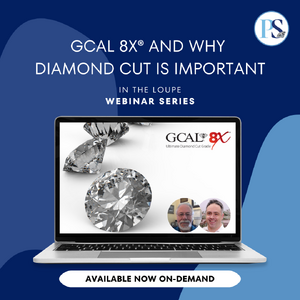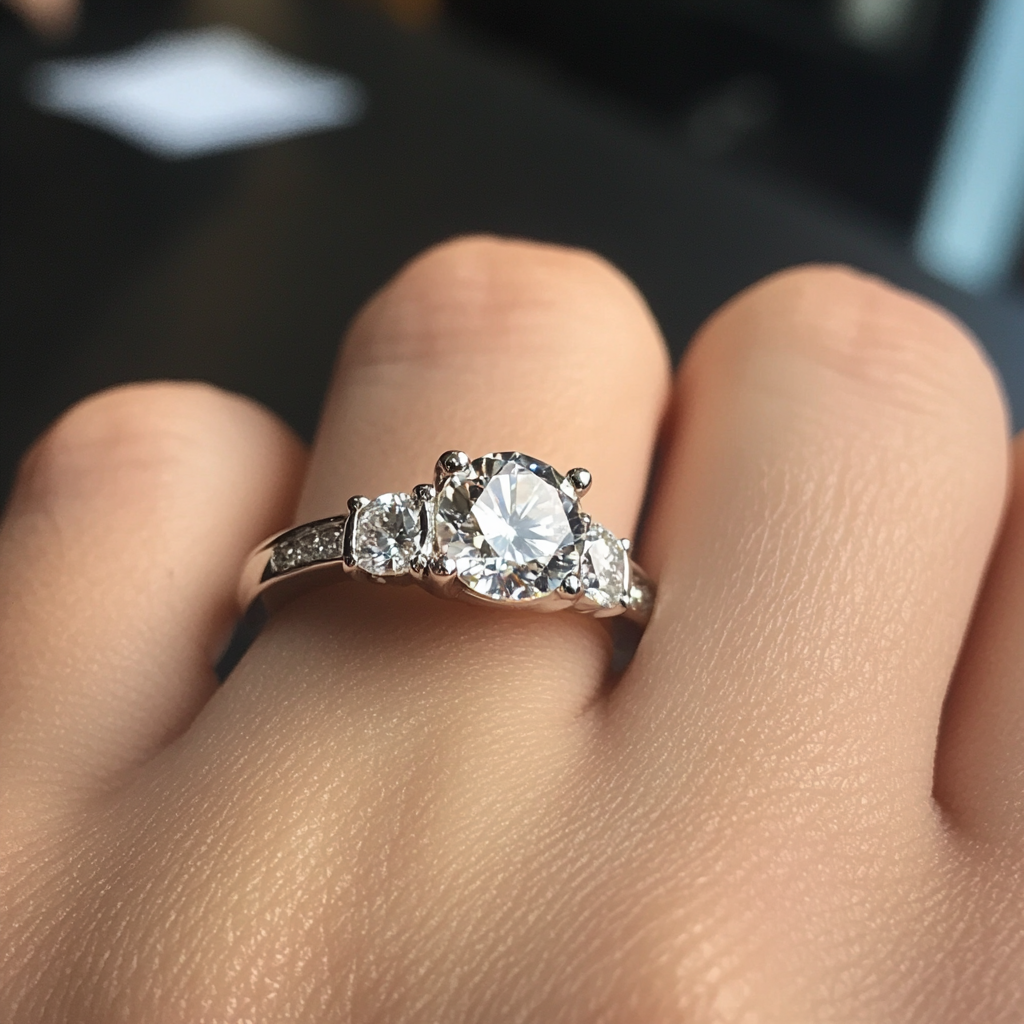- Joined
- Nov 4, 2022
- Messages
- 27
Part 1: Additional Q&A from webinar (questions 1-4)
Question 1: Angelo mentioned that all images on the report should be actual images, not computer generated. (And I agree). However, my understanding is that all the light performance analysis relies on the same scanning tools and measurement technologies that are used as inputs to create those CG images on the report. Is that correct? If that's correct, if you can't trust the CG light performance images on the report, how can consumers be sure they can trust the light performance analysis software and result?
Answer 1: Great question with a lot of nuance and angles to it. At GCAL, we take all actual images and videos of the diamond for evaluating light performance, and do not rely on ray-traced or computer generated images from a scan. We believe that is a superior approach. However, if you don’t have access to actual images, a ray-trace or computer generated image can be a very powerful tool, and the companies like Sarine and Lexus that are behind this technology are pretty remarkable with how accurate they can be. Additionally, the benefit of a ray traced image is that you know there is a consistent environment/parameters applied to the stones, so it does make comparisons of multiple stones a somewhat guaranteed apples to apples comparison, in some ways. To the second part of the question…most of the ray traced/CG images that you see, are all based on either a Helium (Lexus) or a Sarine scan, or a derivative file format, that essentially creates a 3d model of the stone, with all the measurements and angles of the stone.
The difference at GCAL is that each of our assessment images/videos are all of the actual diamond, taken with different pieces of equipment, and the only interaction with the computer or software is when we are digitally processing the image and video and scoring it. Finally, there are times when the actual image and ray traced image look identical…but as we showed during the presentation, there are times when there is a significant deviation between actual and ray trace, due to a bad scan, inclusions, a hazy stone, significant grain/stria, or even lackluster surface polish, which could all render a 3D scan, much less accurate than a real image/video. This is also why many higher end retailers and manufacturers take their own images and videos, to supplement a ray-traced or CG image.
Question 2: How do you price an 8X?
Answer 2: GCAL is not in the business of buying or selling diamonds, so we don’t price 8X Certified Diamonds. However, since these stones take significantly more time to cut and polish, and the yield of rough is typically lower on an 8X (compared to an average Triple EX), they will sell at a premium to a Triple EX. This is corroborated by what manufacturers of 8X tell us.
Question 3: Are there different characteristics of light return that are prioritized differently with different shapes? (I.e.. using the same metrics to evaluate a round brilliant and a rose cut wouldn't accomplish much - but that's an extreme example! Are there specific characteristics that GCAL would demerit in one shape but reward in another?)
Answer 3: We compare apples to apples, rounds to rounds, ovals to ovals, etc. Here’s our methodology for creating the 8X criteria for each shape. For the last 20 years, GCAL has been assessing the optical light performance of diamonds that pass through our lab. We’ve captured the optical symmetry, brilliance, scintillation, photomicrographs, and proportions on millions of diamonds. For each shape, we relied upon and data mined these performance images. From all this physical and optical data that we’ve collected, we identified the highest performing diamonds. Then we isolated the proportions and angles that they shared in common. We also correlated how variations in each cut parameter impacted aspects of light performance. From there we were able to establish and set the minimum requirements for 8X, in each of the shapes.
Further, we identified specific shape aesthetics that we felt were important when creating and identifying ‘super ideal’ caliber stones in each shape. For ovals, we aim for a perfect ellipse shape without shoulder bulges, and minimal bow-tie effects. For princess cuts, we restricted the L/W ratio to a max of 1.015 (most allow Princess up to 1.05), we restrict the corners to 90 degrees, with a 0.3 degree tolerance, and we will not certify a princess cut as an 8X if there is any damage to the corners. A hallmark of the most finely cut round brilliants is a perfect Hearts and Arrows pattern, so that is a requirement on the rounds.
For each shape that we create a cut standard, it has its own unique specifications and characteristics and is judged against stones of the same shape. Some shapes like a rose cut are not evaluated for light performance
Question 4 (for @oldminer): Do you feel we need to account for all 8X in our valuations?
Answer 4 (from @oldminer): Of course, 8X is a rather extraordinary achievement of cutting. It will be a stone worthy of a premium price. You’ll need to research the market to discover what that added value might be. Pricescope may be very important in such research as GCAL increases their market share of ideal cut diamond grading.
Question 1: Angelo mentioned that all images on the report should be actual images, not computer generated. (And I agree). However, my understanding is that all the light performance analysis relies on the same scanning tools and measurement technologies that are used as inputs to create those CG images on the report. Is that correct? If that's correct, if you can't trust the CG light performance images on the report, how can consumers be sure they can trust the light performance analysis software and result?
Answer 1: Great question with a lot of nuance and angles to it. At GCAL, we take all actual images and videos of the diamond for evaluating light performance, and do not rely on ray-traced or computer generated images from a scan. We believe that is a superior approach. However, if you don’t have access to actual images, a ray-trace or computer generated image can be a very powerful tool, and the companies like Sarine and Lexus that are behind this technology are pretty remarkable with how accurate they can be. Additionally, the benefit of a ray traced image is that you know there is a consistent environment/parameters applied to the stones, so it does make comparisons of multiple stones a somewhat guaranteed apples to apples comparison, in some ways. To the second part of the question…most of the ray traced/CG images that you see, are all based on either a Helium (Lexus) or a Sarine scan, or a derivative file format, that essentially creates a 3d model of the stone, with all the measurements and angles of the stone.
The difference at GCAL is that each of our assessment images/videos are all of the actual diamond, taken with different pieces of equipment, and the only interaction with the computer or software is when we are digitally processing the image and video and scoring it. Finally, there are times when the actual image and ray traced image look identical…but as we showed during the presentation, there are times when there is a significant deviation between actual and ray trace, due to a bad scan, inclusions, a hazy stone, significant grain/stria, or even lackluster surface polish, which could all render a 3D scan, much less accurate than a real image/video. This is also why many higher end retailers and manufacturers take their own images and videos, to supplement a ray-traced or CG image.
Question 2: How do you price an 8X?
Answer 2: GCAL is not in the business of buying or selling diamonds, so we don’t price 8X Certified Diamonds. However, since these stones take significantly more time to cut and polish, and the yield of rough is typically lower on an 8X (compared to an average Triple EX), they will sell at a premium to a Triple EX. This is corroborated by what manufacturers of 8X tell us.
Question 3: Are there different characteristics of light return that are prioritized differently with different shapes? (I.e.. using the same metrics to evaluate a round brilliant and a rose cut wouldn't accomplish much - but that's an extreme example! Are there specific characteristics that GCAL would demerit in one shape but reward in another?)
Answer 3: We compare apples to apples, rounds to rounds, ovals to ovals, etc. Here’s our methodology for creating the 8X criteria for each shape. For the last 20 years, GCAL has been assessing the optical light performance of diamonds that pass through our lab. We’ve captured the optical symmetry, brilliance, scintillation, photomicrographs, and proportions on millions of diamonds. For each shape, we relied upon and data mined these performance images. From all this physical and optical data that we’ve collected, we identified the highest performing diamonds. Then we isolated the proportions and angles that they shared in common. We also correlated how variations in each cut parameter impacted aspects of light performance. From there we were able to establish and set the minimum requirements for 8X, in each of the shapes.
Further, we identified specific shape aesthetics that we felt were important when creating and identifying ‘super ideal’ caliber stones in each shape. For ovals, we aim for a perfect ellipse shape without shoulder bulges, and minimal bow-tie effects. For princess cuts, we restricted the L/W ratio to a max of 1.015 (most allow Princess up to 1.05), we restrict the corners to 90 degrees, with a 0.3 degree tolerance, and we will not certify a princess cut as an 8X if there is any damage to the corners. A hallmark of the most finely cut round brilliants is a perfect Hearts and Arrows pattern, so that is a requirement on the rounds.
For each shape that we create a cut standard, it has its own unique specifications and characteristics and is judged against stones of the same shape. Some shapes like a rose cut are not evaluated for light performance
Question 4 (for @oldminer): Do you feel we need to account for all 8X in our valuations?
Answer 4 (from @oldminer): Of course, 8X is a rather extraordinary achievement of cutting. It will be a stone worthy of a premium price. You’ll need to research the market to discover what that added value might be. Pricescope may be very important in such research as GCAL increases their market share of ideal cut diamond grading.




300x240.png)